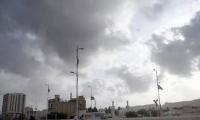higher than what is being reflected in this data. Sources in the department confirmed that elite/ top private schools never shared their enrolment data with the department vis-à-vis its enrolment drive.
A communications officer from UK’s Department for International Development (DFID-Pakistan), which provides broad sector budget support to Punjab’s School Education Department to help improve access to quality of schooling, and support the government’s 2018 education goals, also confirmed that the enrolment achievement includes both PEF and other private schools.
The communications officer also shared key findings of Nielsen’s household survey, held through DFID, to vet enrolment achievement of Punjab in the first phase of the enrolment drive. According to the report, the student enrolment split is 53 percent public schools and 47 percent private schools while overall enrolment percentage in the first phase of UPE Campaign is 90 percent. The key findings of Nielsen don’t differentiate between enrolment at Madrassahs and non-formal system in total enrolment at private schools.
Even if one does not indulge in debate about government’s “efforts” to get students enrolled in private schools, the data reveals growing trend vis-à-vis people preferring private schools over the public ones. This is indeed worrisome aspect since public schools offer free education while private schools charge fee at will. The shift towards private schools should also serve as a notice to the Punjab government which over the years has been ignoring the much-demanded and much-needed regulatory body for private schools which besides charging fees collect different kinds of funds. The mandatory purchase of stationery items and uniforms from prescribed shops is another aspect exposing private sector fleecing the masses in the name of education. This should certainly be a wake-up call for those at the helm and efforts should be made to bring the government-run schools in a position where people prefer these over private schools. The low quality of education, lack of facilities and access to schools are often cited as reasons behind growing shift towards private schools.
Above all under the Punjab Free and Compulsory Education Act 2014, it is responsibility of the provincial government to provide free and compulsory education to “ALL” children of the age of 5 to 16 years of the province. However, presently, the law is toothless as no rules of business have been framed to ensure its implementation.
Undoubtedly providing free education opportunities to all children of the province is a big challenge for the government as there are financial constraints besides societal issues. However, there is a constant demand from the stakeholders that the government should come clean vis-à-vis data and should bring it on table to ascertain the magnitude of the issue and make concerted efforts to achieve this goal. Pakistan has not held population census since 1998 which shows seriousness of the incumbent as well as successive governments vis-à-vis assessing prevailing crises in different sectors like education and subsequent planning to address challenges these sectors face.
When contacted School Education Department Punjab (Special Secretary) Ahmad Ali Kambo said the enrolment drive should be seen in context of international commitments vis-à-vis Millennium Development Goal (MDG) of achieving 100 percent enrolment a primary level. He said private sector was extending support to achieve this target. About the Right to Education (RTE) law of the province, the Special Secretary said the government plans to achieve 100 percent enrolment at public schools by the year 2018.
Meanwhile, analysis of the enrolment data by The News shows some very interesting trends and patterns. For example, district Khushab, hometown of incumbent Secretary School Education Department, Punjab Abdul Jabbar Shaheen, has the lowest percentage (27 pc) of enrolment in public schools when compared with overall enrolment. The district recorded 50 percent enrolment in private schools and the rest in Madrassahs and non-formal system.
According to the data, overall percentage of boys is 53 percent while that of girls is 47 percent. The top five districts with highest enrolment of boys (when compared with overall enrolment) are Bhakkar (59 pc, Bahawalpur (59 pc), Muzaffargarh (59 pc), Chakwal (58 pc) and Faisalabad (58 pc). The top five districts with highest enrolment of girls are Rahimyar Khan (58 pc), Toba Tek Singh (57 pc), Narowal (56 pc), Nankana Sahib (56 pc) and Okara (55 pc). The top five districts with highest enrolment in Madrassahs when compared with overall enrolment are Bahawalpur (17 pc), Khushab (16 pc), Lodhran (16 pc), Rahimyar Khan (10 pc) and Rajanpur (9 pc). The district Khanewal with 77 percent students has highest number of students enrolled in public schools when compared with overall enrolment followed by Pakpatan (76 pc), Bahawalnagar (72 pc), Vehari (68 pc) and Okara (68 pc).
The district Sheikhupura with 68 percent students has the highest number of students enrolled in private schools when compared with overall enrolment followed by Faisalabad (64 pc), Multan (63 pc), Gujranwala (58 pc) and Attock (54 pc).
This representational image shows an ambulance on the road. — APP FileLAHORE:Five persons were killed and 1,350...
This image shows a tubewell powered by solar panels. — APP/FileLAHORE:Applications are being sought from farmers to...
Representational image of an ambulance approaching an incident site. — AFP/FileLAHORE:A 14-year-old boy was injured...
Vendors are selling vegetables at a market in Lahore on March 26, 2023. — OnlineLAHORE:Issues of overcharging and...
A man wears facemask on the way along a road engulfed in smog in Lahore on November 14, 2024. — OnlineLAHORE:The...
IGP Punjab, Dr Usman Anwar in a group photo along with prompted police officers at the Central Police Office Lahore...







